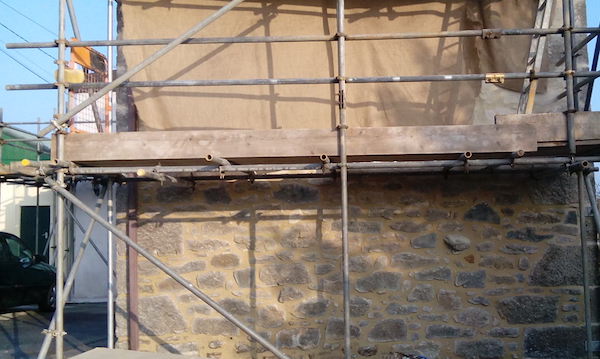Homeowners are increasingly conscious of the need to tackle the restoration of traditional buildings with sensitivity, an appreciation of the techniques and natural materials involved, and a commitment to maintaining the character of the local landscape. However, the salvaging of a failing structure often demands a carefully nuanced approach – as the following example demonstrates.
With the benefit of hindsight, the client’s problem had a certain air of inevitability about it: a traditional cottage where cement pointing had been applied, leading eventually to moisture penetration and persistent damp issues. Having first raked out the cement from the joints in preparation, we would normally then repoint with lime; but in this instance, the condition of the stonework on one gable end of the ‘weathered’ side of the property was a real cause for concern. A combination of weather, damp, and poor-quality stonework had left a badly degraded surface in need of urgent remedial treatment. Conventional rendering would have required dubbing out the wall to achieve a flat surface, but this would have produced a heavy coating and probably destroyed much of the character of the walling by concealing most, if not all, of the stonework. Fortunately, there is a traditional technique we can turn to which is designed to overcome such problems – lime bagging.
The essence of lime bagging is that it allows masonry joints to be repointed in the customary fashion whilst producing a final finish which achieves some of the benefits of rendering too, all without destroying the essential character of the stone wall.
To achieve this, joints are raked out to a depth of 20-25mm – dependent upon the type and condition of the stone. Next, 24 hours before pointing, all joints are carefully washed out until thoroughly clean – and cleaning is repeated once again just prior to starting the pointing work, only this time with just a fine spray. Then a lime-mortar coat is worked well into the joints, followed by rubbing up with a hessian sack when the mortar has cured. Rubbing is again repeated when the mortar has started to set, the aim being to push the material well back into the joint to eliminate any shrinkage which may have occurred.
Once the lime mortar has been applied and ‘bagging’ is complete, the lime surface then needs suitable protection from both sun and wind. This is usually achieved by setting up a hessian covering to ensure a free flow of air which maintains an ambient surface temperature whilst also keeping out the worst of the elements. This should stay in place for around five days and, to be effective, must be damped down in warm weather. The primary aim is to prevent premature drying out which could prevent optimum adhesion and cause failure. Thus the finished wall surface should also receive a fine spray treatment to allow curing to proceed at a slow, natural pace.
A relatively straightforward application, lime bagging can be given a finishing coat of lime wash or lime paint if required. The real beauty of this technique is its capacity to restore the integrity of damaged walls and stonework without compromising the appearance of the property.
If you would like any advice on the lime bag finish technique for your property and your property is based in Cornwall, please get in touch.


